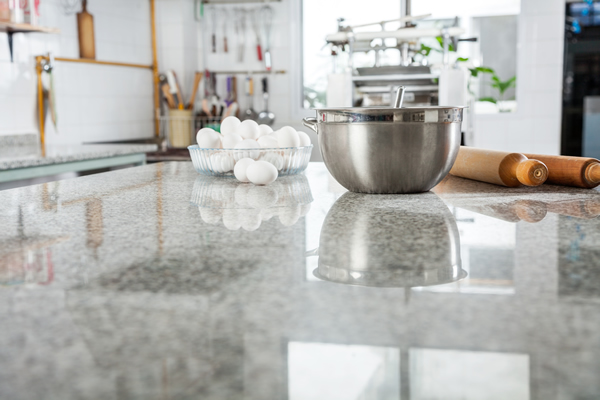
A regular schedule of maintenance is critical to protecting your home's value. Properly caring for your home's surfaces is just one of the many essential things you can do to help keep things in tip-top shape.

Whether you recently purchased a new house, are settled in for a lifetime of memories or are planning to sell in the future, a regular schedule of maintenance is critical to protecting your home's value. Properly caring for your home's surfaces is just one of the many essential things you can do to help keep things in tip-top shape.
The BOWA team has rounded up the most common surfaces and the recommended methods of care for each type below:
Granite
Routine cleaning with mild dish soap and a soft cloth is recommended. General household cleaners, such as Windex and 409, can be used, but may leave a film, so it's best to use these sparingly. Although granite is highly durable, avoid using any harsh solutions that may break down the sealant.
Marble
As a porous stone, marble is susceptible to scratching and staining, so spills should be wiped up immediately, with extra care given to acidic substances that can etch the surface. For routine cleaning, use a damp chamois to avoid streaking. Occasionally wipe the surface down with plain warm water and once per year use warm water and a dishwashing liquid, but always be sure to rinse well and wipe dry. Periodic resealing and polishing is also recommended. If you do have a stain, it's best to contact a professional for removal as methods vary by type.
Soapstone
Soapstone is a non-porous surface that does not need to be sealed and chemicals and acids do not harm it, so cleaning and care are quite simple. General household cleaners can be used, but regular soap and water is sufficient. An occasional treatment with mineral oil is recommended to help ensure even darkening. While soapstone is more prone to scratches, they are often easily removed with a light sanding and/or mineral oil.
Tile Flooring
Regular sweeping or vacuuming without a beater bar loosens and removes dirt that could easily adhere to tile surfaces. For cleansing, a damp mop with a mild soap or detergent is recommended. For heavier soil, soap build up and hard water stains, it's best to use a neutral pH cleaner available at your local grocery or hardware store, but be sure to read the label for usage details and instructions. Acidic, ammonia-based, bleach, and abrasive cleaners, as well as scouring pads and steel wool pads, should all be avoided.
Wood Flooring
Routinely sweep or vacuum without a beater bar to remove dirt, and use a slightly damp mop or terry cloth pad for cleaning. Never use a wet mop, as standing water can dull the finish, damage the wood, and leave a discolored residue. Additionally, avoid using any type of chemicals on the wood, which can cause additional wear and failure when recoating in the future. A little bit of vinegar and water will work just fine, or a high-quality wood floor cleaner, such as one from Bona, is another recommended option.
Stainless Steel
Water with a mild detergent and a microfiber towel is suggested for general cleaning. Fingerprints on the surface can easily show, but occasional buffing with olive oil, mineral oil or distilled vinegar can help to keep your steel smudge-free. If you choose to use a store-bought cleaner, keep in mind not all stainless steel is created equal. Different manufacturers use different grades and types of steel, so one brand of cleanser might not clean as well as another on a particular appliance.